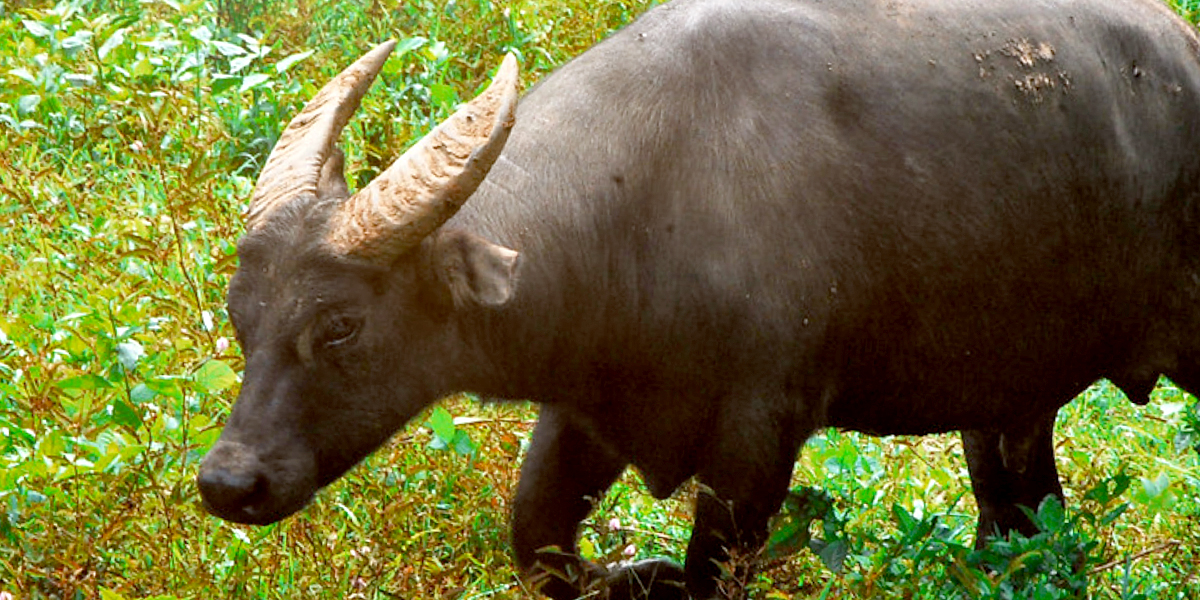At first glance, the tamaraw could be mistaken as a carabao. A closer look would reveal its shorter, leaner built as well as having V-shaped horns. Unlike the domesticated carabao, the tamaraws are extremely solitary creatures. They retreat in the slightest detection of human presence but could charge aggressively when threatened.
This steadfast animal can only be found in the Philippines, particularly in the mountains of Mindoro. From thousands, its population dropped to 154 in year 2000, making it the Philippines’ largest endemic land mammal critically endangered. Several factors led to the decline, including hunting and loss of habitat. Hunting is traditionally practiced by local indigenous groups, and the tamaraw is often hunted for food during lean months. Large tracts of forests and grasslands in Mindoro are also being converted to agricultural lands, leading to their displacement.
Fortunately, their numbers have risen up to 523 as of May 2018, due to the efforts of the Department of Environment and Natural Resources (DENR) along with partners from the private sector. One of them is the Sun Life Foundation, of which I’m a part of, giving me the chance to trek Mts. Iglit-Baco and meet the glorious tamaraws.
Upon reaching Mt. Magawang, a peak adjacent to Mt. Iglit, I took a peek at the spotting scope and became teary-eyed. From a distance, two tamaraws were grazing in the grassland. They were beautiful creatures, almost magical, and to see them in real life was a privilege not everybody gets.
Why we need to save the tamaraws?
The tamaraw is one of the few things we can truly call our own. It can only be found in the Philippines and nowhere else in the world. It is (or should be) a source of national pride, a living legend that’s part of our natural heritage and this world's wonder. Saving the tamaraw means preserving something truly Pinoy for generations to come.
On a bigger scale, we need to acknowledge that every living thing has an intrinsic value and a role to play in this ecosystem where we all belong. A loss in our biodiversity leads to an imbalance in the complex web of life. Climate change, for instance, is the accumulated result of years of unsustainable development and consumption without consideration to the environment.
We are all connected
Sun Life Foundation’s campaign for environmental sustainability was definitely instrumental in changing the way I see this world. My fieldworks gave me the chance to step out of my comfort zone. They were undoubtedly the hardest, often pushing me beyond my physical limits. We climbed mountain ranges in Isabela and visited remote coastal barangays in Masbate. We planted trees in the Ipo Watershed in Bulacan and picked up trash along the shores of Metro Manila. We trekked from daybreak to sun down in Mts. Iglit-Baco. Yet I would not trade these adventures for something easier but less meaningful.
Working with different communities and seeing their individual challenges remind me that our natural resources are not equally abundant nor infinite. Seeing the tamaraws reminded me of a lesson that brought me to Foundation work: we are all connected. And if we were to live a brighter life, we can only do so by ensuring that we thrive in harmony with nature.
To borrow the beautiful words of our partner organization in saving the tamaraws, the World Wide Fund for Nature (WWF): “Nature matters because we can’t have a prosperous future on a depleted planet. The unprecedented loss of biodiversity we are seeing today is an existential threat to human life and economic development. Nature is not a far away entity, but it's close to us, it's a part of our lives - and without the natural environment we wouldn’t thrive.”











.png)

